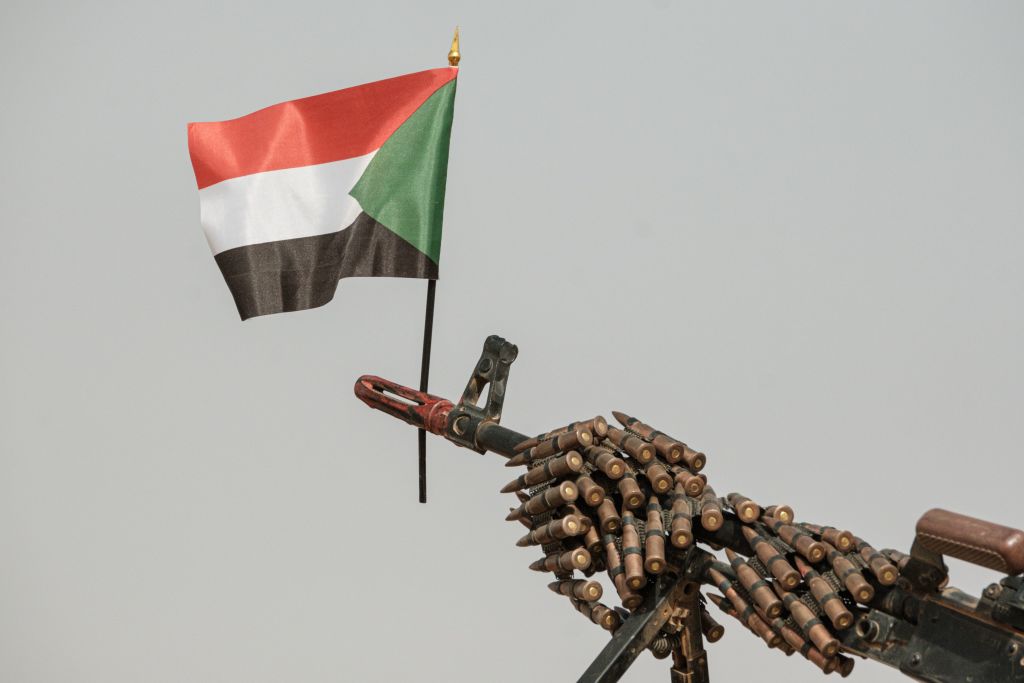ADF STAFF
Sudanese military officials reported on May 26 that they had intercepted a cache of weapons as they were being smuggled from an unspecified foreign country through the Red Sea region to rebels in the eastern part of the country.
The claim was the latest episode of weapons being brought into Sudan to fuel the ongoing battle between the country’s de facto leader, Gen. Abdel Fattah al-Burhan and his former deputy known as Hemedti. The two men have been fighting for control of Sudan since April 15.
Both al-Burhan, leader of the Sudan Armed Forces (SAF), and Hemedti, head of the Darfur-based Rapid Support Forces (RSF), have spent the weeks since fighting flared in Khartoum raiding each other’s bases for weapons and requesting support from outside sources.
When fighting began, the SAF had access to the military’s full weapon supply, including fighter aircraft, tanks and heavy weapons. The RSF was more lightly armed but also more mobile when it came to capturing key pieces of infrastructure such as airports.
Before fighting broke out, the RSF and SAF also shared some weapons stores.
“When the conflict broke out, RSF fighters neutralized their SAF counterparts and proceeded to move weapons and ammunition out, onto RSF vehicles or to ‘secure’ locations elsewhere,” Khristopher Carlson, senior researcher with the Small Arms Survey, told ADF in an email. Carlson’s research focuses on the impact of weapons in Sudan and South Sudan.
Along with weapons caches, the RSF has also taken control of some of the military-owned factories that make them.
“Naturally, a question following the RSF seizure of these facilities — as well the seizure of SAF fighter jets, helicopters, tanks and other heavy equipment — is whether the RSF can operate them, or maintain them,” Carlson told ADF.
The RSF has eliminated the SAF’s air superiority by using surface-to-air missiles known as MANPADS (Man-Portable Air Defense Systems) to shoot down fighter planes. The exact source of the MANPADS remains a question: Some are likely from SAF stocks, but outside sources are also a possibility, according to Carlson.
CNN and the website All Eyes on Wagner recently tracked flights from the Russian mercenary Wagner Group’s base in Libya to deliver weapons to an RSF base in northwest Sudan. That delivery reportedly included surface-to-air missiles. SAF forces raided the base a few days later. The SAF also took over an RSF-controlled airport in Merowe.
Hemedti has a well-established relationship with the Wagner Group thanks to their mutual interest in mining and smuggling Sudan’s gold.
Wagner also operates in the Central African Republic, which borders Sudan on the southwest. The RSF controls the border crossing at Um Dafuq in South Darfur and, according to CAR rebels, has collaborated with Wagner to receive weapons through the checkpoint there.
While Hemedti benefits from his connections of the Wagner Group, al-Burhan is maintaining Sudan’s ties to Egypt and Chad. Both countries are hosting large numbers of refugees while staying out of the fighting.
A United Nations weapons embargo on Sudan is unlikely, according to Carlson. The incoming Security Council chair is the United Arab Emirates, a Hemedti ally.
With both sides increasingly evenly matched in weapons and manpower, al-Burhan has been building political alliances as a way of isolating Hemedti and encircling the RSF.
Al-Burhan is working to win support from other armed groups inside Sudan against the RSF, including potential allies in Eastern Sudan and others with long-standing RSF animosity, Carlson told ADF.
Al-Burhan has developed alliances with long-time enemies of Hemedti in Darfur, a region where people, supplies and weapons flow easily over the border from Chad. Darfur has become a second front after Khartoum, with fighting in the capitals of North Darfur and South Darfur.
On May 20, al-Burhan replaced Hemedti as his deputy on Sudan’s Transitional Sovereignty Council with militia leader Malik Agar, head of the Sudan People’s Liberation Movement North faction.
Al-Burhan also recently called for Sudan’s former officers, noncommissioned officers and pensioners to reenlist and return to service in the fight against the RSF if they are fit to do so. Experts estimate that Sudan has about 85,000 reservists to supplement its 120,000 members of its armed forces. The RSF, by comparison, has about 100,000 members.
Many SAF reservists are expected to bring their own weapons to the fight. The Small Arms Survey has estimates that Sudan, with a population of about 45 million, has nearly 3 million weapons in civilian hands, or 6.6 weapons for every 100 people. That makes Sudan one of the most heavily armed societies in Africa.
The RSF denounced the call-up as “a potential recipe for disaster.”

